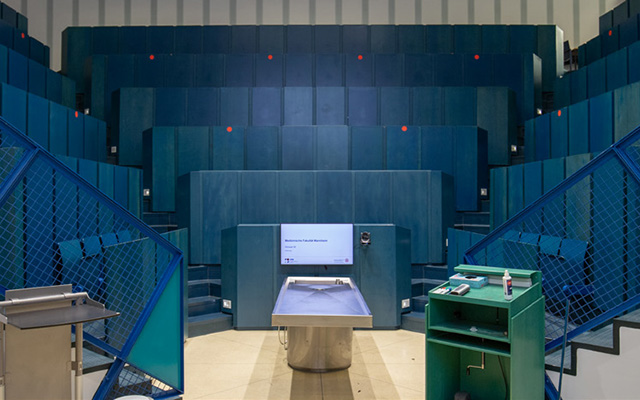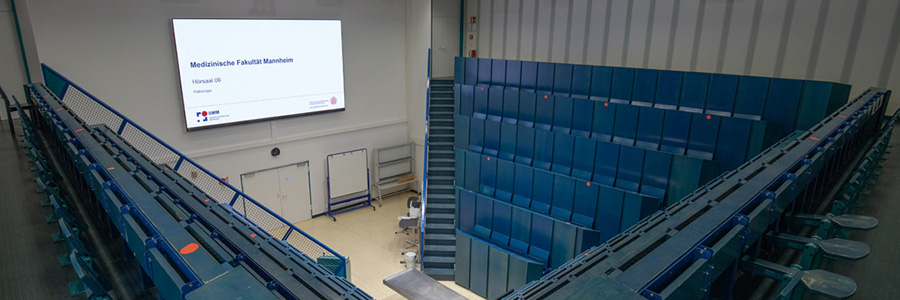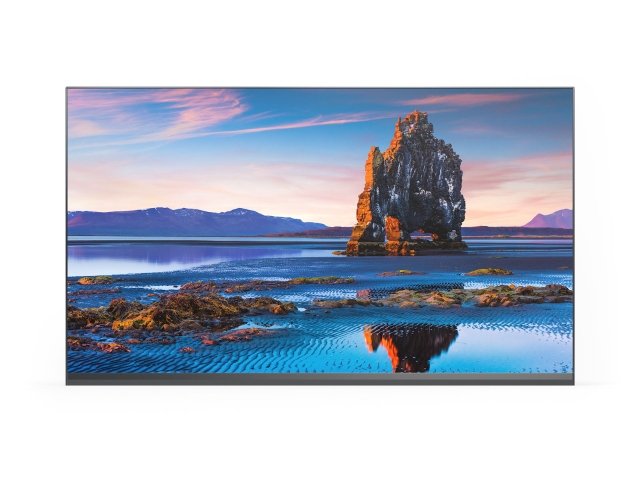Sharp NEC Display Solutions Client Installation, Higher Education
Medical Faculty Mannheim at the University of Heidelberg
Innovative LED technology for precise pathological analysis
During the COVID-19 pandemic, the Medical Faculty Mannheim at the University of Heidelberg, like many other universities and colleges, was forced to adopt more modern teaching methods using audiovisual technology and digital signage. In 2021, the first steps were taken to modernise technologies across the entire campus of the Medical University of Mannheim.
Hendrik Stoerk, Head of Media and Event Technology at the Medical Faculty, was tasked with planning and implementing the project: “We defined two stages for this project,” Stoerk said. “Stage 1 involved equipping small lecture halls and seminar rooms. The three large lecture halls followed in stage 2. They posed the bigger challenge. Each required a planning period of up to three months. Our integration partner AV Data came on board after invitations for tenders were extended.”
The solution in use at the time in the pathology lecture hall, a double system projector each with 5,500 ANSI lumen and XGA resolution, was unable to meet the high requirements that the pathology department placed on image quality, resolution and contrast. The department needed a state-of-the-art solution that produced brilliant, high-contrast images in full HD.
The challenge: Finding a visually powerful technology at an affordable price
The first important decision to be made was which technology should replace the previous double system projector. Two solutions were considered: a laser projector or an LED wall.
“After running down our list of requirements and weighing up our users’ needs, we knew right away that the LED wall was the best solution in terms of the technical aspects,” Stoerk said.
“The two key factors in our decision were: the 16-bit colour processing feature and significantly improved contrast even under high ambient light conditions. Unlike projectors, with LED we can avoid both halo effects and annoying shadows. This is essential for realistic research and instruction in pathology. LED technology also generates none of the background noise that you see with professional projectors. In the end, these arguments persuaded the leaders of the Medical Faculty to invest in the somewhat more expensive LED technology.”
Sven Schührer, sales manager at AV Data, added: “The decision to purchase an LED wall from Sharp/NEC was based on several factors. First, we know all about the exceptional quality offered by Sharp/NEC solutions and the manufacturer’s services. The new LED FE series was the ideal entry-level product for the Medical Faculty: a full HD solution as a complete package that was immediately available and could be quickly delivered.”

The solution: a high-quality LED wall for improved diagnostic work
After one year of meticulous planning, the 220-inch NEC LED FE02i2 wall was installed in the pathology lecture hall at the Medical Faculty in spring 2023. This system offers all the most important functions for image reproduction on a large, scalable digital space. The durable quality of the FE series will also ensure reliable operation, an extremely critical aspect for medical usage and teaching. The LED walls come in various resolutions, including HD, FHD and UHD. The configuration of multiple housings that are seamlessly connected to one another makes it possible to generate highly detailed, large-format images without producing any annoying background noise and shadows.
The job of installing the new LED wall posed a few challenges of its own, including construction-related restrictions regarding protection of historic monuments and an uneven building wall. “We wanted to attach a nearly 700kg LED wall to the building’s wall, but we were not permitted to do any structural work on this wall because parts of the building have been placed on the list of historic monuments,” Schührer said. “Working closely with engineers and structural engineers, we developed a special substructure made of steel. This substructure then enabled us to install the LED wall so that it is secure and stable. We were also able to offset the unevenness in the wall itself, something that varied by up to 12 mm. The result is a straight image format and an optimal image experience for the university.”
The result: a new dimension of medical instruction
The new LED wall has elicited lots of positive feedback. “The image quality and impressive contrast enable us to see details in medical images that extend all the way down to the tiniest shadows, things that we could not see or could just barely see in the past,” Hendrik Stoerk said. “The LED wall has tremendously improved our diagnostic potential. It helps us achieve even more precise results.” One other major plus is the silent way that the LED solution operates, a feature that works in combination with the highly detailed images to produce a wow effect among both pathologists and students. “The only problem we have right now is that the LED wall obscures the light of laser pointers – we are already working on a solution to that,” Stoerk said.
As a result of this successful project, the Medical Faculty Mannheim has also expressed interest in other modernisation possibilities, including installing Sharp/NEC’s LED technology in the main lecture hall. The diagnostic improvements facilitated by the technical system underscore the important role played by cutting-edge technologies in health care as well as their potential to bolster medical research, teaching and patient care at the highest level.
Medical Faculty Mannheim at the University of Heidelberg
The Medical Faculty Mannheim is one of two independent medical departments at the University of Heidelberg. It makes up part of the Medical University of Mannheim along with the University Medical Center Mannheim. The Medical Faculty is a recognised partner of such major research institutes as the Helmholtz Association of German Research Centers, the German Cancer Research Center, and the Fraunhofer Society. Employing its successful model degree program based on the Mannheim Reformed Curriculum for Medicine and Medical-Related Occupations, the Medical Faculty Mannheim is currently teaching approximately 1,940 students (as of 2022).


